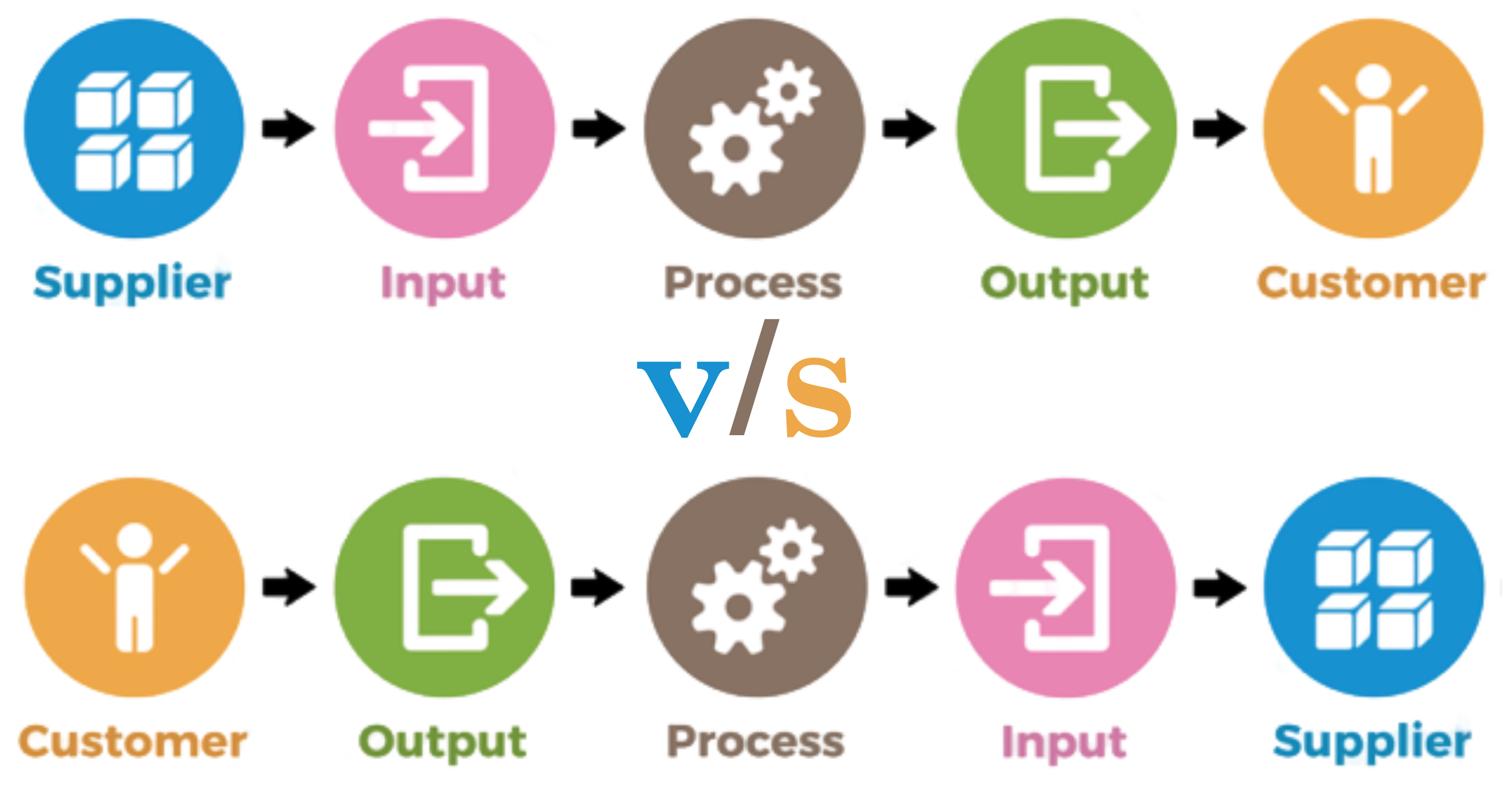SIPOC: Suppliers, Inputs, Process, Outputs, Customers
- SIPOC is a high-level overview of the process which concentrates more heavily on the inputs and outputs of the process rather than the process itself.
- It gives the context of what we are looking at (the Output), and so is useful as part of the planning process (the define phase of DMAIC)

When do you use SIPOC diagrams?
- SIPOC diagrams are generally used during the Define stage of DMAIC to provide an early top-level process map.
- It can also be used for new employees or for retraining, as it gives a good overview of the process, including why it is needed.
Why do we use SIPOC diagrams?
- Its high-level overview is useful to quickly convey information about a process
- Can be used for refreshing people who haven’t seen the process in a while
- Getting to the basics of what the process is for, in order to redesign the processes with DMAIC and DMADV
COPIS: Customers, Outputs, Process, Inputs, Suppliers
- A COPIS diagram is a high-level process map that gives a quick overview of the process from the customer’s point of view.
- It is a customer-focused alternative to a SIPOC diagram and is essentially a SIPOC in reverse.
- It concentrates more on the areas around the process than the process itself.
- Also known as COPIS chart, COPIS map or COPIS analysis
When do you use COPIS diagrams?
- It is a high-level overview of a process that we use in the define phase of DMAIC to help define the opportunity.
- Also use it when designing new processes, as it starts with customer needs, and takes us through all the steps in order for how to meet those needs.
Why do we use COPIS diagrams?
- COPIS is more customer-focused and can make sure that the CTQ factors are being covered off.
- Looking at the customer BEFORE you are looking at the process
- Matching the process to the customer needs rather than trying to force the customer needs to match what the process makes.
- This can result in a process that is much better matched to true value add activities.

